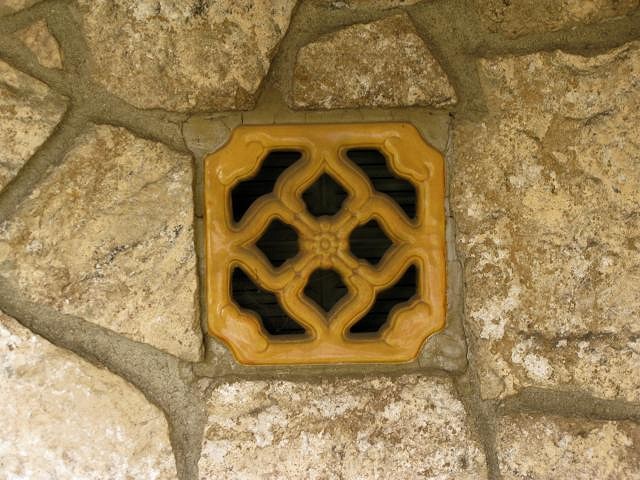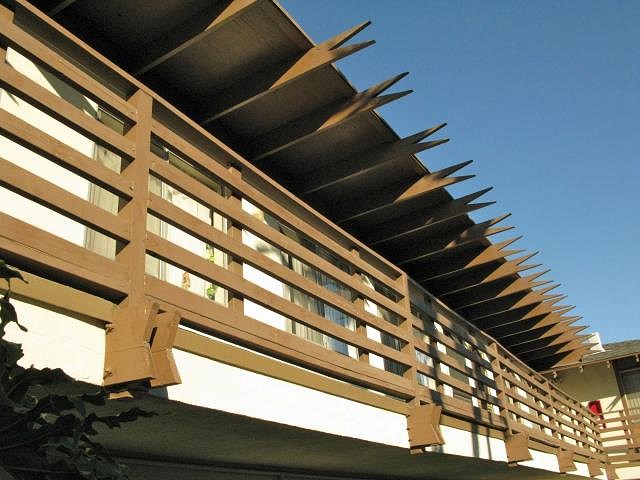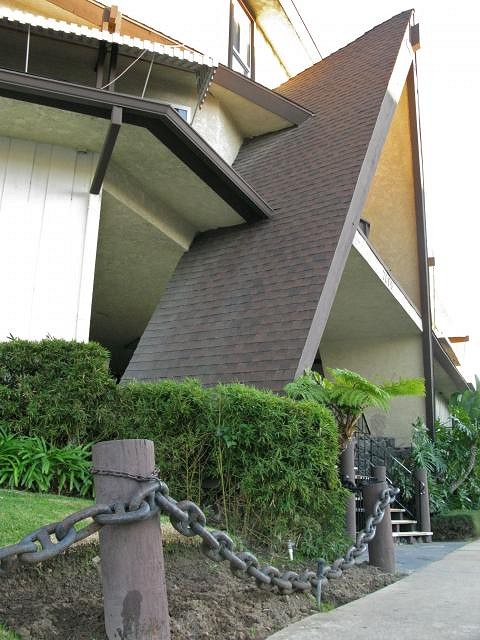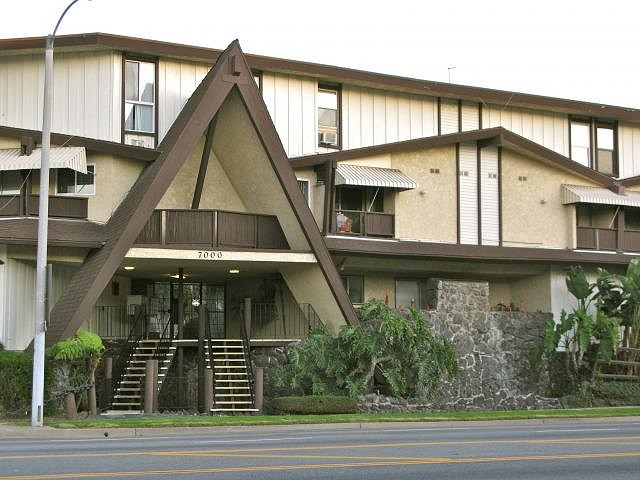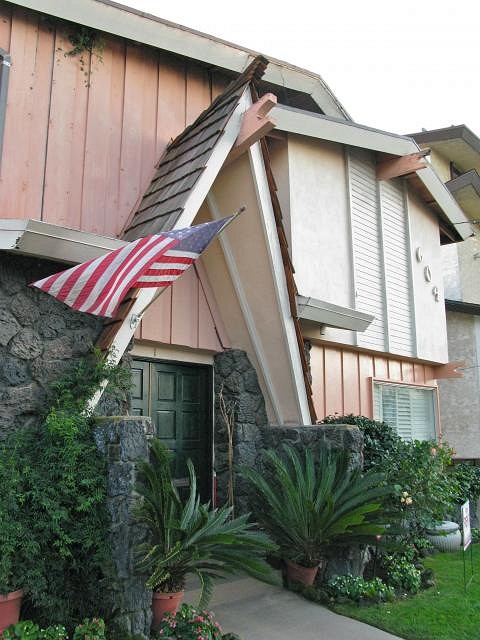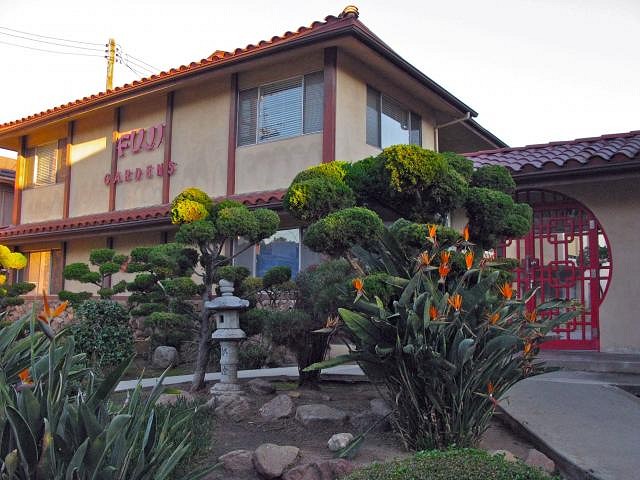Tiki Central / General Tiki
Mapping out tiki in Orange County, Calif.
|
ATP

Atomic Tiki Punk
Posted
posted
on
Thu, Jun 21, 2012 3:58 PM
Spike, Those are true A-Frame construction and very mid century Now when we see a house or apartment that looks Tiki to us (Actually Hawaiian to be accurate) Recreating a Tropical "Hawaiian" resort village was obviously the intention of the builders/Designers But......Much of these design choices originate in Mid Century Architecture! But those cross & support beams look Tiki you say? I have talked to some of the still surviving carpenters & framers who worked in the 50s & 60s about this Not a particularly Tiki approach is it? So my argument here is most of what we see & think may be "Tiki" inspired residences So I say you need more then just an A-Frame & ornate crossbeam to assume that the building was using "Tiki/Hawaiian" |
|
B
bigbrotiki
Posted
posted
on
Fri, Jun 22, 2012 5:07 AM
Whoa, glad to see some serious discussion and respectful communication going on here. While we are still in the dark about the cultural link and first American appearance of the outrigger beam, and cannot pinpoint the exact source of the A-frame roof, we all agree that these are two of the main features of Tiki architecture. I think the big question posed here is: Are these two elements enough to make any building "Tiki"? How many elements does a building need to make the step from having "Tiki flourishes" to being "Tiki"? I always liked James Teitelbaum's "TYPSY" (Tikis-per-square-inch) factor he applied to Tiki Bars, I would be easy to create something like that for mid-century tropical architecture: ***** = full fledged Tiki temple with Tikis, A-frame, outrigger beams, Polynesian name, entrance bridge, waterfalls, etc **** = Tiki temple that has seen better days, but has some telling details left like lava rock walls, outriggers, A-frame, waterfalls *** = clear Tiki influence, but could also be less specific mid-century modern tropical ** = has single elements of Tiki style, but was not specifically conceived as being of that style
Looking back at what attracted me to Tiki in the first place was the fact that it was flamboyant, elaborate and baroque in the multitude of its style elements, and that more so than other theme concepts applied in architecture. So to me, when there are not enough of those elements in place, a place is not really "Tiki" in spirit and character. This said, another main other aspect of Tiki that fascinated me is the juxtaposition of modern and primitive. So a very sleek A-frame with just ONE Tiki can be more interesting to me than a mansard-roofed building with a Hawaiian name and some tropical landscaping. It can be quite rewarding for the urban archaeologist to find single STYLE ELEMENTS that show the influence of Tiki. Some elements can be traced back directly to Tiki because they clearly stem from Polynesian restaurants. Don The Beachcomber was the first again here with many original ideas. Here his "Chinese tile", found built into a wall at the Outrigger apartments on Rosemead Blvd in L.A.: And I would classify "outrigger" beams as a Tiki feature, even if they appear on buildings in California that are not specifically Tiki: Nautical elements are also more often used in Tiki dwellings than anywhere else: Now the above example, having not only pier pylon and anchor chain railings, but a huge A-frame and an elaborate lava rock waterfall and moat, would get a 4-Star rating from me: But what about this one?: It would only get a 3-Star, because even though it has several main style elements of Tiki style, there was no clear indication that it was intended to be Tiki. The differentiation I am making here is IS a place Tiki, or does it just use elements of the style. (Then again, this could be low-budget Tiki, the little house that would if it could. The only way to really find out is to talk the owners/builders) And then there are OTHER themes: :) One more thing: I had not seen Zulu's post on the Dickey roof...
...and while it is a great find, I cannot agree with his enthusiastic comparison to other forefathers of American Poly pop:
|
|
L

Luckydesigns
Posted
posted
on
Fri, Jun 22, 2012 8:07 AM
Very well put, Sven. So, in my examples, do you feel that they were created with 'tiki' or Polynesian influences? Or were they simply 'modern' in design? Remember that the first three pictures originally had lava rock where the stone is now. I hold firm that the last image that I posted is undoubtedly designed with tiki influence. |
|
S
SpaceAgeCity
Posted
posted
on
Fri, Jun 22, 2012 9:35 AM
A big part of the "is it tiki" answer lies in the intent of the architect. Unfortunately, we often can't determine that intent at this late date. Sometimes, tiki-themed landscaping, light fixtures, decor, signage, etc, can help us detect that intent. On the other hand, a LACK of those features really tells us nothing, since those features are often stripped away over the decades. That said, I think there's something to be said for asking, "Would a big tiki, if placed in front of this building, look perfectly at home?" It's certainly not a perfect test, but it's an indicator. I like Sven's idea for a "How Tiki IS It?" guide. I'd like to see a visual guide of "Tiki Architectural Features," with a building getting a point added for each feature on the list, and perhaps two points added for certain features. Not that this stuff won't still be fairly subjective, but at least we'd have a semi-official system of classification. Chris |
|
R
RevBambooBen
Posted
posted
on
Fri, Jun 22, 2012 10:13 AM
My first 18 years were in the Shores. We had the house on the corner of 62nd and Canal. We had an A-Frame and Lava. Never thought of it being tiki but I guess it was. :) |
|
ATP

Atomic Tiki Punk
Posted
posted
on
Fri, Jun 22, 2012 11:12 AM
Now everybody is thinking, Also I should point out the design style is more Hawaiian/Tropical Since Tiki Style pretty much co opted Hawaiian design elements I don't see any reason not to use it I think that placing a Tiki in front of a classic Mid Century Modern dwelling is a beautiful thing! Also note that an A-Frame structure (an entrance) that is not structural Chris thanks for putting up with my arguments here, I hope this helps with your project |
|
L

Luckydesigns
Posted
posted
on
Fri, Jun 22, 2012 12:46 PM
A little disagreeing and further investigating is nothing but good for this forum (as long as it stays civil and on point)! Good notes in that last post, too, ATP! |
|
FT
forgotten tikiman
Posted
posted
on
Fri, Jun 22, 2012 2:21 PM
What a great discussion. As kinda a newbie to tiki, I too wondered if A-frame stuctures had any tiki influence. I work around SB and San Luis Obispo county and I see A-frame buildings from time to time. I even have a cool one right near me in Pismo Beach. But this thread clears some things up for me on how to perceive tiki or not tiki. But of course I enjoy the A-frame if its tiki or not because it just looks cool. But as some have said. Not only do I enjoy tiki which is my #1. I also enjoy mid-century design and the Atomic-age so to speak. Which things were just designed with cool shapes and nothing is boring. Great thread going on here. Learning alot. :) |
|
S
SpaceAgeCity
Posted
posted
on
Fri, Jun 22, 2012 2:29 PM
I think the line between Hawaiian/Tropical and Tiki is so blurry that one can't really separate the two. Clearly, it's all a reaction to the same Poly-Pop/Hawaii craze. Chris |
|
ATP

Atomic Tiki Punk
Posted
posted
on
Fri, Jun 22, 2012 2:57 PM
Now let's get a cocktail! see ya tonight Spike!!!! |

